Yemen Biodiversity and the Built Environment
Yemen is home to a myriad of unique wildlife and diverse ecosystems. However, the conservation of its biodiversity faces significant challenges due to habitat loss, climate change, and other threats. It is crucial to raise public awareness and collaborate internationally to protect Yemen’s wildlife and preserve its natural heritage. Sustainable development and responsible environmental stewardship are key to ensuring a habitable environment for future generations. Let’s explore the fascinating world of Yemen’s biodiversity and the importance of preserving it for the well-being of local communities and the planet.
Key Takeaways:
- Conservation efforts are essential to protect Yemen’s unique wildlife and preserve its biodiversity.
- Yemen boasts a wide variety of ecosystems, including coastal plains, deserts, and montane habitats.
- Succulent plants, medicinal plants, and forest resources contribute to Yemen’s rich flora.
- The coastal and marine environment plays a vital role in Yemen’s economy and needs preservation.
- Habitat loss, climate change, invasive species, and freshwater scarcity are threats to Yemen’s biodiversity.
The Diverse Ecosystems and Habitats of Yemen
Yemen is blessed with a rich variety of ecosystems and habitats, each with its own unique characteristics and biodiversity. From coastal plains to deserts and montane habitats, Yemen showcases the incredible resilience and adaptability of life in diverse environments. Let’s explore the extraordinary natural wonders found in each of these ecosystems.
Coastal Plains
The coastal plains of Yemen are a haven for diverse ecosystems. The mangroves, found along the coastline, serve as a protective barrier against coastal erosion and provide crucial breeding grounds for marine life. These lush green forests in the midst of the Arabian Sea are a sight to behold.
“The coastal plains of Yemen are a testament to the intricate relationship between land and sea. These ecosystems are essential for the sustainability of marine life and serve as a beacon of hope for coastal protection.”
Deserts
The deserts of Yemen, such as the famous Rub’ al Khali, or Empty Quarter, are a true testament to the resilience of life in extreme conditions. Here, plants and animals have adapted to survive in arid landscapes, where water is scarce, and temperatures can soar. These deserts are a study in the art of endurance, showcasing the sheer determination of nature to thrive against all odds.
Montane Habitats
Yemen’s montane habitats, nestled in the breathtaking mountains, offer a sanctuary for unique plant and animal species. These high-altitude regions are home to endemic flora and fauna, found nowhere else in the world. Hiking through lush green valleys and basking in the serenity of these montane habitats is a dream come true for nature enthusiasts.
“The montane habitats of Yemen are a treasure trove of endemic species. These fragile ecosystems require our utmost protection, as they provide a safe refuge for biodiversity and inspire awe in all who visit.”
In conclusion, Yemen’s diverse ecosystems, including coastal plains, deserts, and montane habitats, are a testament to the resilience and diversity of life on our planet. Each of these habitats plays a crucial role in supporting a wide range of plant and animal species, many of which are exclusive to Yemen. It is our responsibility to protect and preserve these natural wonders, ensuring their sustainability for future generations.
Flora and Fauna of Yemen
Yemen is a haven for a diverse range of flora and fauna. The unique geography and climate of the country have fostered the evolution of various species adapted to the arid conditions prevalent in Yemen.
One iconic example of Yemen’s rich flora is the dragon’s blood tree, a succulent plant that has thrived in Yemen’s rugged landscapes for centuries. Its unique appearance, with umbrella-shaped canopies and bright red resin, makes it a sight to behold.
Yemen’s forest resources, including timber and fuelwood, are of immense importance to the country’s economy. These resources provide essential materials for construction, crafts, and heating purposes. However, sustainable management practices must be implemented to ensure the long-term viability of the forests.
Medicinal plants and aromatic herbs have been integral to Yemen’s traditional healthcare practices for generations. The country’s rich biodiversity has given rise to an abundance of plant species with healing properties. Local communities rely on these plants for their therapeutic benefits, creating a deep connection between people and nature.
Yemen is also known for its diverse range of crops, cultivated across different regions. From coffee and qat to dates and grains, the fertile lands of Yemen yield a bountiful harvest. Agriculture plays a vital role in the country’s economy and sustains the livelihoods of many Yemeni farmers.
Moreover, Yemen’s varied habitats support a vibrant and diverse birdlife. From the coastal regions to the mountains, Yemen offers habitats for migratory and native bird species. Bird enthusiasts flock to Yemen to observe these magnificent creatures in their natural habitats, creating opportunities for eco-tourism and nature conservation.
Yemen’s flora and fauna are a testament to the richness of its biodiversity. The preservation of these natural treasures is vital for the ecological balance, the well-being of local communities, and the sustainable development of the country.
Yemen’s Key Flora and Fauna
| Flora | Fauna |
|---|---|
| Succulent plants | Endemic bird species |
| Dragon’s blood tree | Native mammals |
| Medicinal plants | Migratory bird species |
| Forest resources | Reptiles and amphibians |
| Crops | Aquatic species |
Yemen’s Coastal and Marine Environment
Yemen boasts a stunning coastline that is home to a diverse range of coastal and marine environments. These environments, including coral reefs, mangrove swamps, and saline mud flats, are not only visually breathtaking but also crucial for the country’s economy, particularly in the fisheries and tourism sectors.
The coral reefs along Yemen’s coast provide critical habitats for a wide array of aquatic species. From colourful fish to majestic dugongs, playful dolphins to magnificent whales, these reefs support a rich and diverse marine ecosystem. The vibrant colours and intricate formations of coral reefs make them a hotspot for underwater enthusiasts and eco-tourists alike, contributing to the country’s tourism industry.
Mangrove swamps, found along Yemen’s coastal areas, are equally important. These unique ecosystems act as nurseries for fish and other marine species, providing shelter and protection during critical stages of their development. They also offer valuable coastal protection, mitigating the impact of storms and erosion.
The saline mud flats, another characteristic feature of Yemen’s coastal environment, support a variety of bird species. These coastal wetlands provide a crucial stopover point for migratory birds along their global routes, making them a haven for birdwatchers.
Preserving Yemen’s coastal and marine resources is essential for the long-term sustainability of the country’s ecosystem and the livelihoods of local communities. Fishing communities rely heavily on these resources for their economic and food security. It is crucial to promote sustainable fishing practices and protect against overfishing to maintain the delicate balance of Yemen’s marine ecosystems.
“Yemen’s coastal and marine environments are not only beautiful but also economically significant, with the fisheries and tourism sectors relying heavily on their resources. Protecting and preserving these habitats is essential for the well-being of local communities and the long-term ecological sustainability of Yemen.” – Marine Biologist, Dr. Sarah Thompson
The Importance of Yemen’s Coastal and Marine Environments
The table below highlights the key features and importance of Yemen’s coastal and marine environments:
| Coastal and Marine Environments | Key Features | Importance |
|---|---|---|
| Coral Reefs | Diverse marine ecosystems, home to a wide array of aquatic species | Provide critical habitats for fish, dugongs, dolphins, and whales. Contribute to tourism and ecological balance. |
| Mangrove Swamps | Nurseries for fish and other marine species, coastal protection | Support local fisheries, act as a buffer against storms and erosion. |
| Saline Mud Flats | Coastal wetlands, vital for migratory birds | Important stopover points for migratory birds, attract birdwatchers and eco-tourists. |
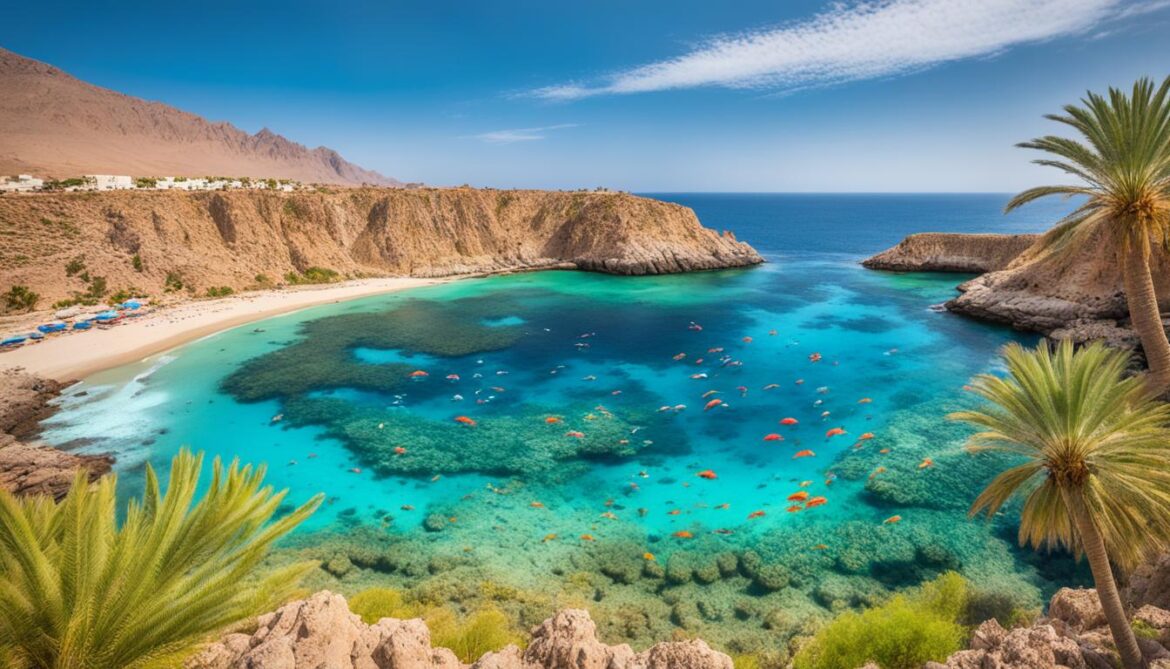
The beauty and significance of Yemen’s coastal and marine environments cannot be overstated. Preserving these habitats will not only safeguard the country’s fragile ecosystem but also contribute to the sustainable development and well-being of its people.
Threats to Yemen’s Biodiversity
Yemen’s biodiversity faces numerous threats, including habitat loss, climate change, invasive species, and freshwater scarcity. These factors pose significant challenges to the preservation of Yemen’s unique wildlife and ecosystems.
Habitat loss resulting from land conversion for agriculture, infrastructure, and human settlement is one of the primary threats to Yemen’s biodiversity. Rapid urbanization and deforestation contribute to the destruction of natural habitats, displacing and endangering countless plant and animal species.
The impacts of climate change further exacerbate the challenges faced by Yemen’s fragile ecosystems. Rising temperatures and changing rainfall patterns disrupt traditional weather cycles, altering the availability of resources and impacting the survival of many species.
Invasive species also pose a significant threat to Yemen’s biodiversity. These non-native species can outcompete native flora and fauna, disrupt delicate ecosystems, and lead to the decline or eradication of endangered species.
Freshwater scarcity is yet another pressing concern. Yemen’s limited freshwater resources, including rivers and underground aquifers, are becoming increasingly scarce due to overuse, climate change, and pollution. The scarcity of freshwater places additional stress on Yemen’s biodiversity, impeding the survival and reproduction of many species that rely on these water sources.
“The preservation of Yemen’s biodiversity is crucial for the long-term ecological balance and the well-being of local communities.”
– Environmental expert, Dr. Aisha Hassan
| Threats | Impact |
|---|---|
| Habitat Loss | Endangerment and displacement of species |
| Climate Change | Disruption of weather patterns and resource availability |
| Invasive Species | Disruption of native flora and fauna |
| Freshwater Scarcity | Increased pressure on water-dependent species |
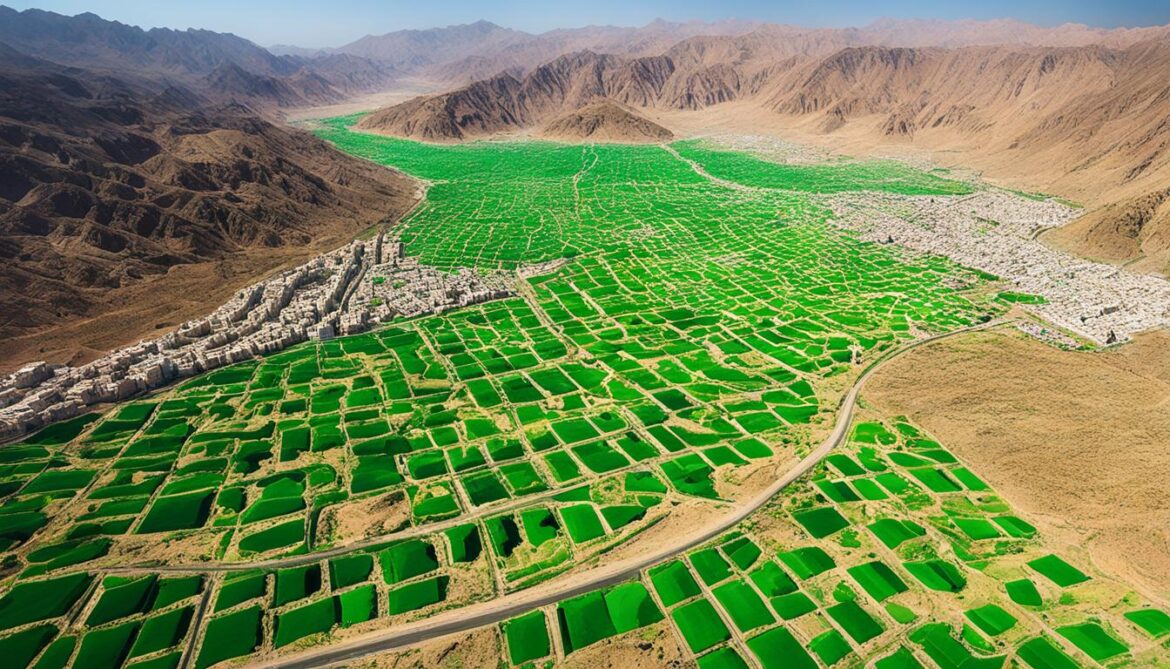
The powerful image above depicts the delicate balance between Yemen’s precious biodiversity and the threats it faces. It serves as a poignant reminder of the urgent need for conservation efforts to protect and sustain Yemen’s unique wildlife and natural heritage.
The National Biodiversity Strategy and Action Plan for Yemen
Yemen has developed a National Biodiversity Strategy and Action Plan that aims to address the conservation of natural resources and promote sustainable use of these resources. The strategy focuses on integrating biodiversity considerations in sectoral development plans and implementing enabling mechanisms to support biodiversity conservation efforts in the country.
One of the key objectives of the strategy is the establishment of protected areas to safeguard important ecosystems and habitats. These protected areas serve as sanctuaries for endemic and endangered species, allowing them to thrive and ensuring their long-term survival.
In addition to protected areas, the strategy also emphasizes the conservation of species that are unique to Yemen and at risk of extinction. By prioritizing the conservation of these species, Yemen aims to preserve its biodiversity heritage for future generations.
The National Biodiversity Strategy and Action Plan also recognizes the importance of integrating biodiversity considerations in infrastructure development, agriculture, tourism, and waste management. By incorporating biodiversity into these sectors, Yemen can ensure that its development is sustainable and does not compromise the health of its ecosystems.
Public awareness plays a crucial role in biodiversity conservation, and the strategy acknowledges the importance of educating the public about the value of biodiversity and the need to conserve natural resources. Indigenous knowledge and practices are also recognized as valuable contributions to biodiversity conservation efforts.
Cross-sectoral cooperation and regional and international collaboration are essential for the successful implementation of the National Biodiversity Strategy and Action Plan. Yemen recognizes the need for partnerships with other countries and organizations to mobilize resources and expertise to support its biodiversity conservation efforts.
Key Components of the National Biodiversity Strategy and Action Plan for Yemen
| Component | Description |
|---|---|
| Conservation of Natural Resources | Focus on protecting and conserving Yemen’s natural resources, including habitats, ecosystems, and species. |
| Sustainable Use of Natural Resources | Promote responsible and sustainable use of natural resources to ensure their long-term availability. |
| Integrating Biodiversity in Sectoral Development Plans | Incorporate biodiversity considerations into various sectors, such as infrastructure development, agriculture, tourism, and waste management. |
| Enabling Mechanisms | Establish mechanisms and frameworks to facilitate the implementation of the National Biodiversity Strategy and Action Plan, including public awareness, indigenous knowledge, capacity building, and regional and international cooperation. |
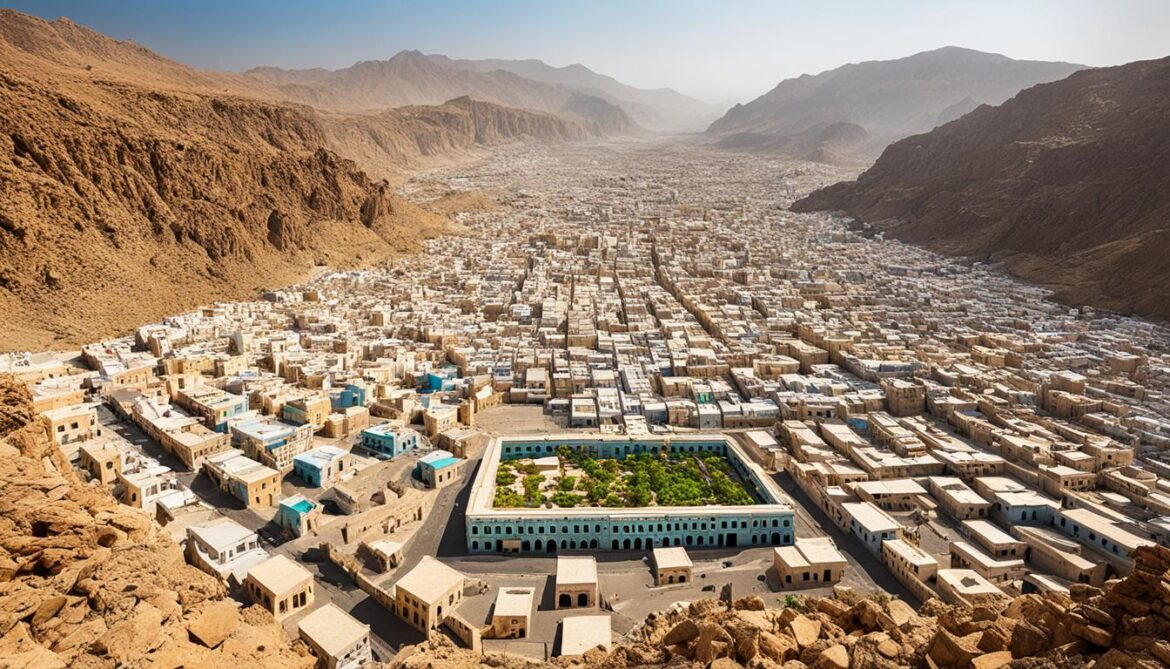
The Environmental Crisis in Yemen
Yemen’s environmental crisis, exacerbated by the ongoing civil war, poses a severe threat to the country’s habitability. The war, alongside carbon emissions from wealthy states, has contributed to the world’s worst humanitarian crisis in Yemen. The environmental crisis, particularly the water crisis, further compounds the challenges faced by the population. Rising sea levels, desertification, and unregulated overfishing are some of the environmental issues exacerbating the situation. Addressing these issues is not only vital for the well-being of Yemen’s population but also for regional stability and U.S. geostrategic interests.

The ongoing civil war in Yemen has taken a devastating toll on the environment. Infrastructure destruction and the contamination of water sources have further strained the country’s already vulnerable ecosystems. The war has not only caused direct environmental damage but has also indirectly contributed to the larger environmental crisis in Yemen.
Carbon emissions from wealthy states have aggravated the already dire situation in Yemen. The carbon footprint of these nations has contributed to global climate change, which has had severe consequences for Yemen’s environment and its people. Climate change has resulted in rising temperatures, increased rainfall variability, and desertification, which have further depleted natural resources and negatively impacted agriculture, water availability, and food security.
The water crisis in Yemen is one of the most pressing environmental challenges faced by the population. Yemen suffers from water scarcity, exacerbated by climate change, over-extraction, and pollution. The availability of clean drinking water has become increasingly scarce, compromising the health and well-being of Yemen’s people.
Furthermore, rising sea levels pose a significant threat to Yemen’s coastal areas, exacerbating the risks faced by communities already affected by the war and environmental degradation. Coastal erosion, saltwater intrusion into freshwater sources, and the loss of land are becoming increasingly common, displacing communities and exacerbating resource scarcity.
“The environmental crisis in Yemen is intertwined with the ongoing civil war, carbon emissions from wealthy states, and the country’s water crisis. Rising sea levels, desertification, and unregulated overfishing further compound these challenges. Addressing these issues is essential for the well-being of Yemen’s population, regional stability, and U.S. geostrategic interests.”
Impacts of the Environmental Crisis in Yemen
The environmental crisis in Yemen has a wide range of impacts on both the environment and the population. Here are some of the key consequences:
- Loss of biodiversity: Yemen’s unique ecosystems and wildlife are under immense threat due to habitat destruction, climate change, and other environmental stressors. The loss of biodiversity has far-reaching implications for the country’s ecological balance and the well-being of local communities.
- Food insecurity: The combination of the water crisis, desertification, and other environmental challenges has led to reduced agricultural productivity and increased dependence on food imports. This has resulted in higher food prices, food insecurity, and malnutrition among the Yemeni population.
- Health risks: The environmental crisis in Yemen has led to the spread of diseases, waterborne illnesses, and malnutrition. Lack of access to clean water, sanitation facilities, and proper healthcare exacerbates the health risks faced by Yemen’s people.
- Displacement and migration: The environmental crisis, coupled with the ongoing civil war, has forced many Yemenis to flee their homes in search of safer and more habitable environments. This has led to internal displacement, migration, and an increased strain on host communities.
| Environmental Issues | Impact |
|---|---|
| Water scarcity | Compromised access to clean drinking water, increased vulnerability to diseases |
| Rising sea levels | Coastal erosion, saltwater intrusion, displacement of coastal communities |
| Desertification | Loss of arable land, reduced agricultural productivity, food insecurity |
| Unregulated overfishing | Depletion of marine resources, loss of livelihoods for fishing communities |
The Threat of Climate Change in Yemen
Yemen is already experiencing the impacts of climate change, with rising temperatures and increased rainfall variability. These changes have significant implications for agriculture, water resources, and food security in the country.
The rising temperatures in Yemen exacerbate the arid conditions, making it even more challenging for farmers to cultivate their crops. The increased heat can lead to reduced yields, affecting the availability of essential food items for the population. Additionally, the changing climate patterns result in irregular rainfall, further complicating agricultural production and exacerbating water scarcity.
Desertification poses a growing threat to existing agriculture in Yemen. As the land becomes increasingly arid and barren, farmers face the challenge of maintaining fertile soil and sustaining their crops. This escalating desertification can lead to a significant decrease in agricultural output, forcing Yemen to rely more heavily on food imports and impacting food security within the country.
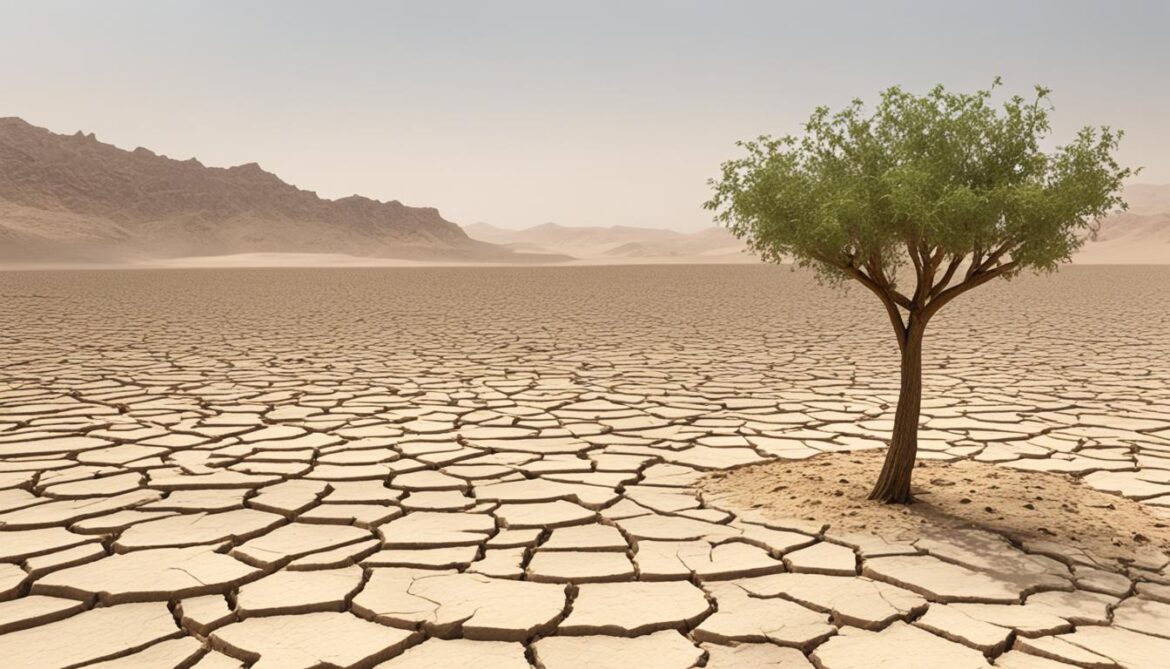
Adapting to the challenges posed by climate change will be crucial for the future sustainability and resilience of Yemen’s ecosystems and communities. Implementing sustainable agricultural practices, such as water conservation techniques and drought-resistant crop varieties, can help mitigate the effects of rising temperatures and irregular rainfall. Collaborative efforts from the government, international organizations, and local communities are essential to develop and implement effective adaptation strategies.
Addressing climate change goes beyond safeguarding agricultural productivity. It also requires comprehensive efforts to protect natural resources, conserve biodiversity, and promote sustainable development. Yemen’s unique ecosystems and diverse flora and fauna are at risk due to climate change impacts, further emphasizing the urgency of taking action to mitigate and adapt to this global challenge.
“We must recognize the importance of climate change and its impacts on Yemen. It is not only an environmental issue but also a matter of social, economic, and political stability. The effects of climate change in Yemen can exacerbate existing vulnerabilities and pose significant challenges for the population. It is imperative that we prioritize climate action and work together to build a more resilient future for Yemen.”
The Impacts on Water Resources
One of the most critical consequences of climate change in Yemen is the impact on water resources. The combination of rising temperatures and irregular rainfall patterns puts strain on the already scarce freshwater sources in the country. Yemen has long struggled with water scarcity, and climate change exacerbates this pressing issue.
As temperatures rise, evaporation rates increase, causing a higher demand for water to meet agricultural, domestic, and industrial needs. However, irregular rainfall makes it challenging to replenish water sources, leading to a continuous depletion of groundwater reserves. This water scarcity affects not only agricultural production but also the availability of drinking water for the population.
Key takeaways:
- The impacts of climate change in Yemen include rising temperatures and increased rainfall variability.
- These changes have significant implications for agriculture, water resources, and food security.
- Desertification poses a growing threat to existing agriculture, leading to increased dependence on imports and decreasing yields.
- Adaptation strategies, sustainable agricultural practices, and collaborative efforts are essential to address the challenges of climate change in Yemen.
- The impacts on water resources, including increased water scarcity, further compound the challenges faced by the population.
The Urgent Environmental Challenges in Yemen
Yemen urgently faces a multitude of environmental challenges that require immediate attention and action. One pressing concern is the presence of a neglected oil tanker off the Yemeni coast, posing a significant threat of a catastrophic oil spill. The potential consequences of such an event would be devastating to Yemen’s marine ecosystem and coastal communities. (Source: Third source)
Water scarcity is another urgent environmental challenge in Yemen. The scarcity is exacerbated by rising sea levels, which contaminate freshwater sources and further limit access to clean water, particularly in rural areas. The lack of sufficient water resources not only endangers the health and well-being of the population but also exacerbates societal tensions and hinders economic development.
Overfishing and unregulated fishing practices pose yet another serious threat to Yemen’s marine environment. The depletion of fish stocks not only affects the livelihoods of local fishermen but also disrupts the delicate balance of marine ecosystems. This, in turn, puts additional strain on coastal communities that rely on fisheries for sustenance and economic stability.
“Addressing these urgent environmental challenges is crucial for safeguarding Yemen’s unique and fragile environment, as well as the well-being and future of its people,” says [Name], an environmental expert.
To confront these environmental challenges effectively, it is imperative that Yemen, along with international partners, invests in sustainable solutions, such as implementing stricter regulations on maritime safety and pollution control. Additionally, efforts must be directed towards promoting sustainable water management practices, including the development of alternative water sources and improved agricultural techniques to mitigate water scarcity.
Furthermore, the establishment of marine protected areas and the implementation of responsible fishing practices are necessary to prevent further depletion of marine resources and preserve the resilience of Yemen’s coastal ecosystems.
By addressing these urgent environmental challenges in Yemen, we can strive towards a more sustainable future, safeguarding the environment and ensuring the well-being of Yemen’s present and future generations.

The Looming Crises in Yemen
The ongoing war in Yemen has had complex short-term environmental impacts, including the destruction and contamination of the environment through mines and unexploded munitions. These hazardous remnants of war pose significant risks to both the natural environment and the well-being of the population. Short-term impact of war
However, amidst these challenges, there have been some positive developments that offer a glimpse of hope. One such development is the rapid spread of solar power in certain households. As access to electricity remains limited in many parts of Yemen due to the conflict, solar power has provided a renewable and reliable source of energy, even in the midst of uncertainty and turmoil. Solar Power
Looking ahead, Yemen also faces long-term environmental consequences that require urgent attention. Climate change, with rising temperatures and increased rainfall variability, poses a significant threat to Yemen’s delicate ecosystems. These changes can lead to the desertification of agricultural land, exacerbating water scarcity and impacting food security. Additionally, the interconnected nature of environmental issues in Yemen, such as the depletion of marine resources and the rising sea levels, further compound the challenges the country must tackle. Long-term Environmental Consequences
These looming crises demand immediate attention and action. It is vital that measures are taken to prevent further deterioration of Yemen’s environment and to safeguard the well-being and resilience of its ecosystems and communities. (yurtsofamerica.com)
By focusing on sustainable development, renewable energy, and responsible environmental stewardship, Yemen can begin to address these challenges and forge a path towards a more sustainable future. Cooperation and support from the international community will be essential in overcoming the environmental crises that loom over Yemen. The time to act is now.
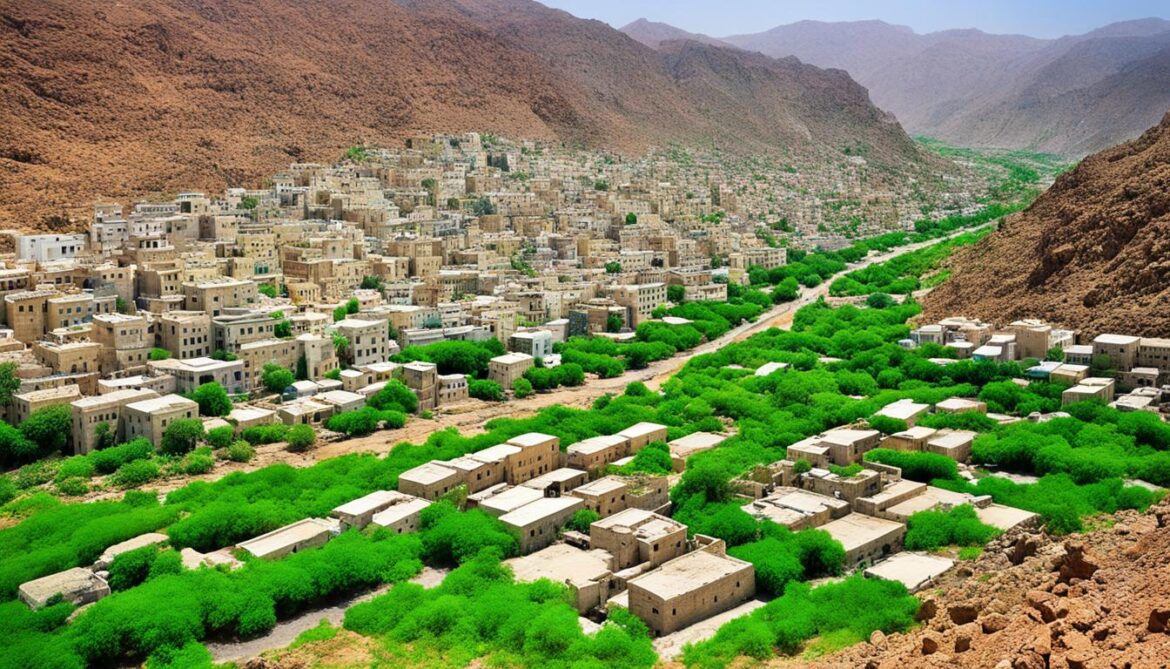
Conclusion
The biodiversity and built environment in Yemen face significant challenges due to habitat loss, climate change, and other threats. Conservation efforts, public awareness, and international collaboration are crucial for protecting Yemen’s unique wildlife and preserving its natural heritage.
Addressing the environmental crises, including the ongoing civil war, environmental degradation, and climate change, is vital for the well-being and stability of Yemen and the wider region. Sustainable development and responsible environmental stewardship are key principles in safeguarding Yemen’s biodiversity and ensuring a habitable environment for future generations.





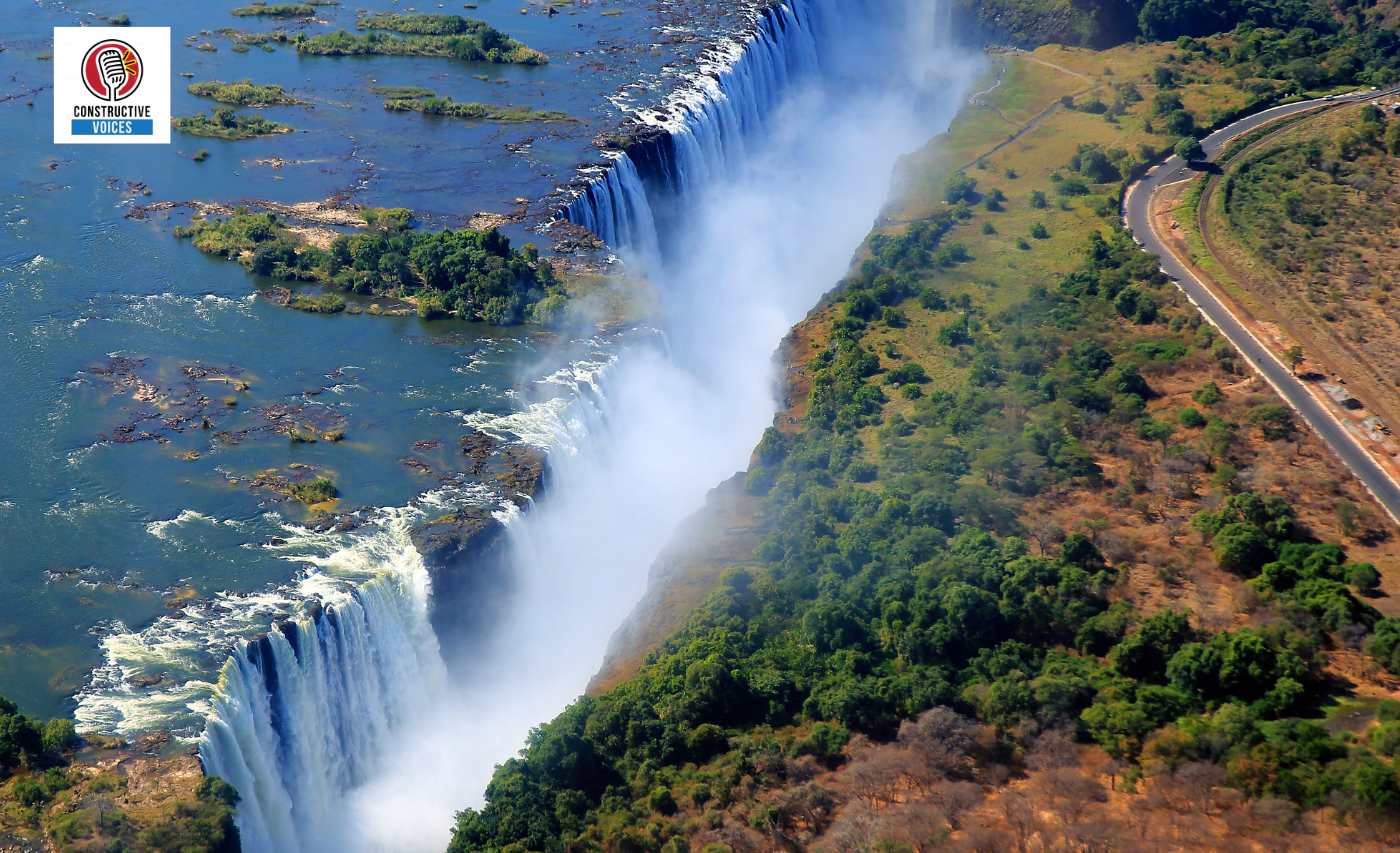



Spain Sacred Natural Sites and Biodiversity
12 months ago[…] numerous sacred natural sites that intertwine spiritual heritage with rich ecological diversity for conservation? These sites have been recognized for their contribution to biodiversity preservation and cultural […]